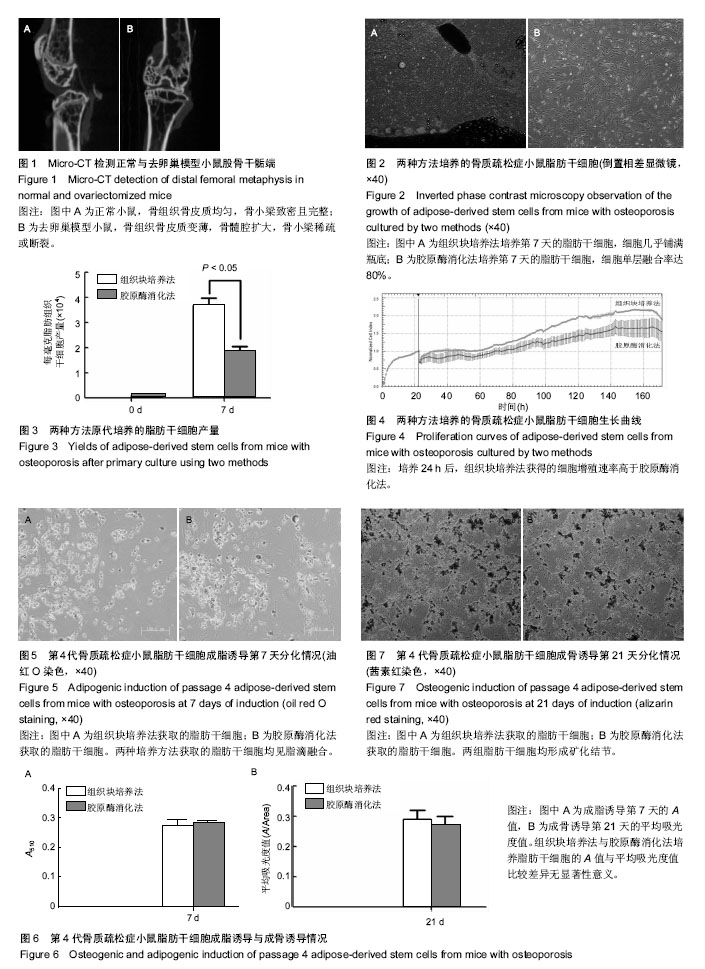| [1] Jain S,Krishna Meka SR,Chatterjee K.Curcumin eluting nanofibers augment osteogenesis toward phytochemical based bone tissue engineering.Biomed Mater. 2016;11(5): 055007.[2] Erjavec I,Brkljacic J,Vukicevic S,et al.Mushroom Extracts Decrease Bone Resorption and Improve Bone Formation.Int J Med Mushrooms.2016;18(7):559-569. [3] Chen S,He Z,Xu G,et al.Fabrication and characterization of modified nanofibrous poly(L-lactic acid) scaffolds by thermally induced phase separation technique and aminolysis for promoting cyctocompatibility.J Biomater Sci Polym Ed. 2016; 27(10):1058-1068.[4] 金玲玲,胡颖,郭庆东等. MC3T3-E1Subclone14体外诱导成骨模型的建立及Ano5基因表达的研究[J].北京口腔医学,2015,23(2): 73-79.[5] Ying H,Li Q,Zhao C.Interleukin 1β and tumor necrosis factor α promote hFOB1.19 cell viability via activating AP1.Am J Transl Res.2016;8(5):2411-2418. [6] Tong S, Xue L, Xu DP, et al. In vitro culture of hFOB1.19 osteoblast cells on TGF-β1-SF-CS three-dimensional scaffolds.Mol Med Rep.2016;13(1):181-187. [7] Liu SH,Wang H,Zhai YM,et al.Comparison of Adipogenesis and Adipocyte Functions of 3T3-L1 Cells and Human Bone Marrow Mesenchymal Stem Cells In Vitro.Zhongguo Shi Yan Xue Ye Xue Za Zhi.2015;23(6):1729-1733. [8] Boerma M,Burton GR,Wang J,et al.Comparative expression profiling in primary and immortalized endothelial cells: changes in gene expression in response to hydroxy methylglutaryl-coenzyme A reductase inhibition.Blood Coagul Fibrinolysis. 2006;17(3):173-180.[9] Ma Q,Yang JJ,Zhou H,et al.Exenatide promotes chemotactic migration of adipose-derived stem cells through SDF-1/CXCR-4/Rho GTPase pathway.Nan Fang Yi Ke Da Xue Xue Bao.2016;36(8):1034-1040. [10] Niemeyer P,Fechner K,Milz S,et al.Comparison of mesenchymal stem cells from bone marrow and adipose tissue for bone regeneration in a critical size defect of the sheep tibia and the influence of platelet-rich plasma. Biomaterials.2010;31(13): 3572-3579. [11] Shi Y,Niedzinski JR,Samaniego A,et al.Adipose-derived stem cells combined with a demineralized cancellous bone substrate for bone regeneration.Tissue Eng Part A. 2012;18 (13-14):1313-1321. [12] Chen HT,Lee MJ,Chen CH,et al.Proliferation and differentiation potential of human adipose-derived mesenchymal stem cells isolated from elderly patients with osteoporotic fractures.J Cell Mol Med.2012;16(3):582-593.[13] Liu HY,Chiou JF,Wu AT,et al.The effect of diminished osteogenic signals on reduced osteoporosis recovery in aged mice and the potential therapeutic use of adipose-derived stem cells.Biomaterials.2012;33(26):6105-6112. [14] Yoon JH,Roh EY,Shin S,et al.Comparison of explant-derived and enzymatic digestion-derived MSCs and the growth factors from Wharton's jelly.Biomed Res Int. 2013;2013: 428726.[15] Fu Y,Li R,Zhong J,et al.Adipogenic differentiation potential of adipose-derived mesenchymal stem cells from ovariectomized mice.Cell Prolif.2014;47(6):604-614.[16] Xiao J,Yang X,Jing W,et al.Adipogenic and osteogenic differentiation of Lin(-)CD271(+)Sca-1(+) adipose-derived stem cells.Mol Cell Biochem.2013;377(1-2):107-119.[17] Stefanowicz-Hajduk J,Adamska A,Bartoszewski R,et al. Reuse of E-plate cell sensor arrays in the xCELLigence Real-Time Cell Analyzer.Biotechniques.2016;61(3):117-122.[18] Sang C,Zhang Y,Chen F,et al.Tumor necrosis factor alpha suppresses osteogenic differentiation of MSCs by inhibiting semaphorin 3B via Wnt/β-catenin signaling in estrogen-deficiency induced osteoporosis. Bone. 2016;84: 78-87. [19] Yang N,Wang G,Hu C,et al.Tumor necrosis factor alpha suppresses the mesenchymal stem cell osteogenesis promoter miR-21 in estrogen deficiency-induced osteoporosis. J Bone Miner Res.2013;28(3):559-573. [20] Boeloni JN,Ocarino NM,Goes AM,et al.Comparative study of osteogenic differentiation potential of mesenchymal stem cells derived from bone marrow and adipose tissue of osteoporotic female rats.Connect Tissue Res. 2014;55(2): 103-114. [21] Pan C,Kumar C,Bohl S,et al.Comparative proteomic phenotyping of cell lines and primary cells to assess preservation of cell type-specific functions. Mol Cell Proteomics.2009;8(3):443-450.[22] Oh HY,Jin X,Kim JG,et al.Characteristics of primary and immortalized fibroblast cells derived from the miniature and domestic pigs.BMC Cell Biol.2007;8(1):20-27.[23] Shebaby W,Abdalla EK,Saad F,et al.Data on isolating mesenchymal stromal cells from human adipose tissue using a collagenase-free method.Data Brief. 2016;6:974-979. [24] Raposio E,Bonomini S,Calderazzi F.Isolation of autologous adipose tissue-derived mesenchymal stem cells for bone repair.Orthop Traumatol Surg Res.2016;102(7):909-912. [25] Gartland A,Rumney RM,Dillon JP,et al.Isolation and culture of human osteoblasts. Methods Mol Biol.2012;806(1):337-355.[26] Zhong J,Guo B,Xie J,et al.Crosstalk between adipose-derived stem cells and chondrocytes: when growth factors matter. Bone Res.2016;4:15036.[27] Sarkanen JR,Kaila V,Mannerström B,et al.Human adipose tissue extract induces angiogenesis and adipogenesis in vitro.Tissue Eng Part A.2012;18(1-2):17-25.[28] Xu WW,Huang L,Chong KK,et al.Differentiation potential of human adipose tissue derived stem cells into photoreceptors through explants culture and enzyme methods. Int J Ophthalmol. 2017;10(1):23-29.[29] Jing W,Xiao J,Xiong Z,et al.Explant culture:an efficient method to isolate adipose-derived stromal cells for tissue engineering.Artif Organs.2011;35(2):105-112.[30] Priya N,Sarcar S,Majumdar AS,et al. Explant culture:a simple,reproducible, efficient and economic technique for isolation of mesenchymal stromal cells from human adipose tissue and lipoaspirate.J Tissue Eng Regen Med.2014;8(9): 706-716. [31] Hendijani F.Explant culture: An advantageous method for isolation of mesenchymal stem cells from human tissues.Cell Prolif.2017.doi:10.1111/cpr.12334.[Epub ahead of print] |
.jpg)

.jpg)